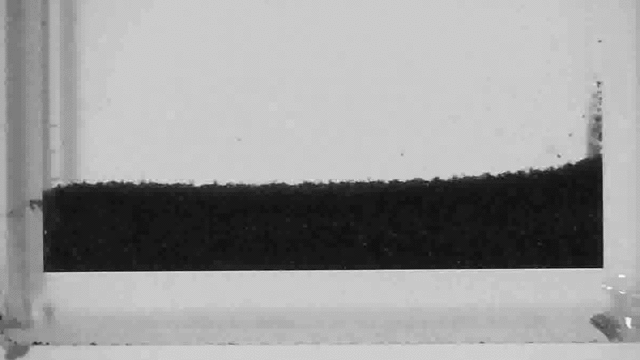Watch sand defy gravity and flow uphill thanks to “negative friction”
There's rarely time to write about every cool science-y story that comes our way. So this year, we're once again running a special Twelve Days of Christmas series of posts, highlighting one science story that fell through the cracks in 2023, each day from December 25 through January 5. Today: how applying magnetic forces to individual "micro-roller" particles spurs collective motion, producing some pretty counter-intuitive results.

Engineering researchers at Lehigh University have discovered that sometimes sand can actually flow uphill. (credit: Lehigh University)
We intuitively understand that the sand pouring through an hourglass, for example, forms a neat roughly pyramid-shaped pile at the bottom, in which the grains near the surface flow over an underlying base of stationary particles. Avalanches and sand dunes exhibit similar dynamics. But scientists at Lehigh University in Pennsylvania have discovered that applying a magnetic torque can actually cause sand-like particles to collectively flow uphill in seeming defiance of gravity, according to a September paper published in the journal Nature Communications.
Sand is pretty fascinating stuff from a physics standpoint. It's an example of a granular material, since it acts both like a liquid and a solid. Dry sand collected in a bucket pours like a fluid, yet it can support the weight of a rock placed on top of it, like a solid, even though the rock is technically denser than the sand. So sand defies all those tidy equations describing various phases of matter, and the transition from flowing "liquid" to a rigid "solid" happens quite rapidly. It's as if the grains act as individuals in the fluid form, but are capable of suddenly banding together when solidarity is needed, achieving a weird kind of "strength in numbers" effect.